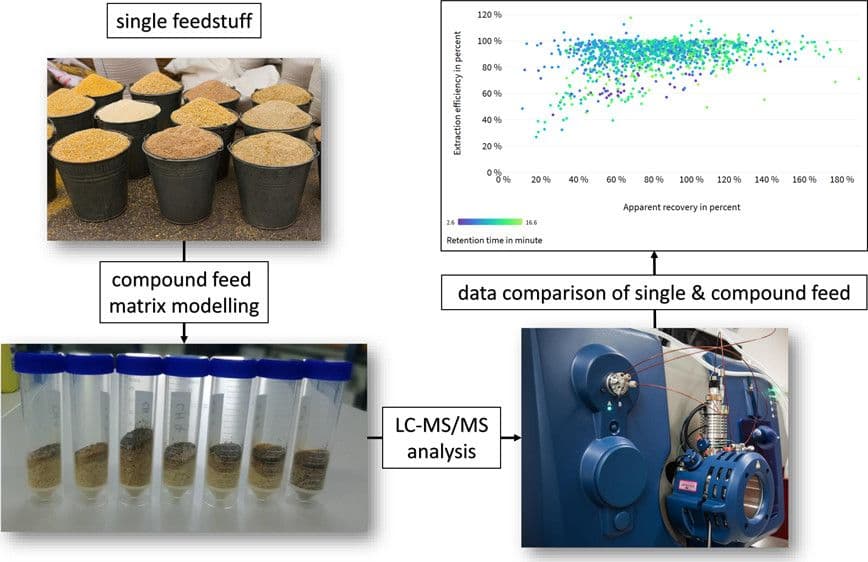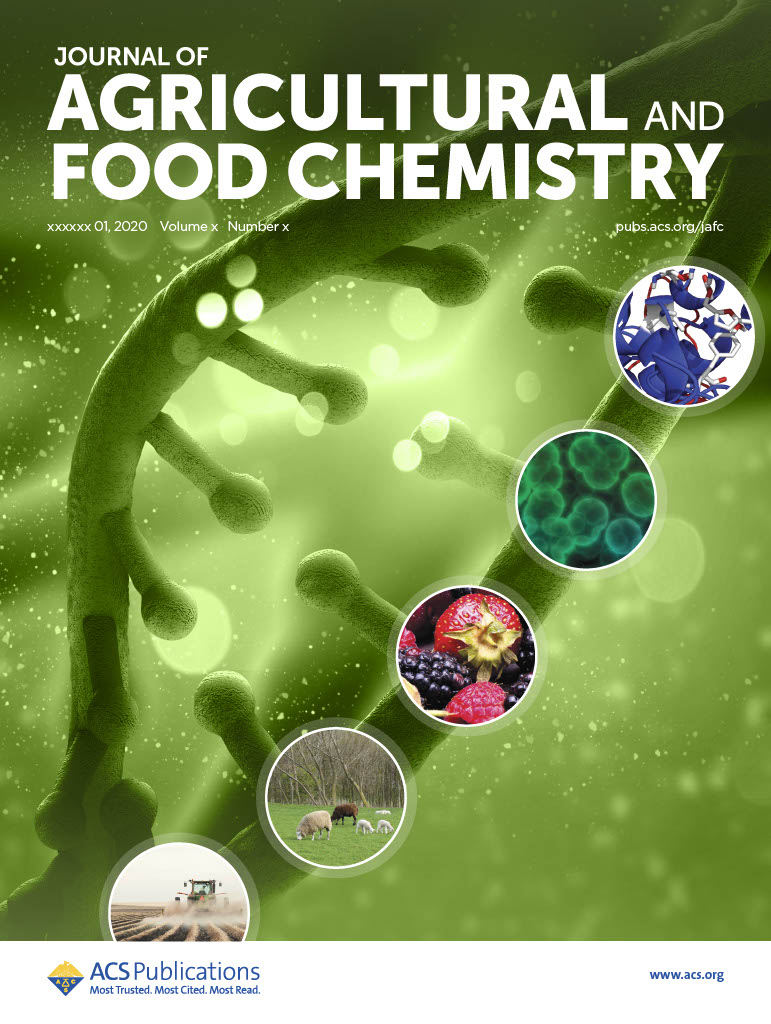The Journal of Agricultural and Food Chemistry (JAFC) and the ACS Divisions of Agrochemicals (AGRO) and Agricultural and Food Chemistry (AGFD) are pleased to announce the winners of the 2021 Journal of Agricultural and Food Chemistry Research Article of the Year Award. Launched in 2013, this award annually recognizes outstanding research work in the areas […]

The Journal of Agricultural and Food Chemistry (JAFC) and the ACS Divisions of Agrochemicals (AGRO) and Agricultural and Food Chemistry (AGFD) are pleased to announce the winners of the 2021 Journal of Agricultural and Food Chemistry Research Article of the Year Award. Launched in 2013, this award annually recognizes outstanding research work in the areas of agrochemicals and food chemistry with the support of the ACS Divisions of Agrochemicals and Agricultural and Food Chemistry.
Congratulations to this year’s award recipients! The awards will be presented at ACS Fall 2021. Each award consists of an honorarium, a plaque, and an invitation to present their research work in a talk as part of each Division’s symposium sessions.
Winner of the AGRO Division Best Research Article:
Evaluation of Matrix Effects and Extraction Efficiencies of LC–MS/MS Methods as the Essential Part for Proper Validation of Multiclass Contaminants in Complex Feed
DOI: 10.1021/acs.jafc.9b07706
By: David Steiner, Rudolf Krska, Alexandra Malachová, Ines Taschl, and Michael Sulyok

In this research article, the authors investigated the contribution of matrix effects and extraction efficiencies to the overall performance of LC-MS/MS multiclass methods and proposed a fit for purpose validation protocol for complex feed matrices. The proposed approach is based on artificially prepared model matrices which ensures an accurate but not overestimated method performance and better reflects real-life conditions of complex feedstuff. Considerable analyte/matrix dependent differences between performance criteria for compound feed formulas and single feed ingredients revealed that requirements of future validation guidelines for feed should be extended and harmonized.
***
Winner of the AGFD Division Best Research Article:
Quantitative Dietary Fingerprinting (QDF)—A Novel Tool for Comprehensive Dietary Assessment Based on Urinary Nutrimetabolomics
DOI: 10.1021/acs.jafc.8b07023
By: Raúl González-Domínguez, Mireia Urpi-Sarda, Olga Jáuregui, Paul W. Needs, Paul A. Kroon, and Cristina Andrés-Lacueva

In this research article, the authors present a new analytical tool for quantitative dietary fingerprinting using urinary metabolomics analysis, which allows the simultaneous quantitation of around 350 food-derived metabolites including polyphenols, glucosinolates, amino acids, methylxanthines, alkaloids and markers of alcohol and tobacco consumption. Dietary assessment is a challenge in nutritional studies, so this method is a significant tool for precision nutrition studies and investigating gut microbiota.
Accepting the Best Research Article Award (AGRO Division) on behalf of all co-authors: Dr. David Steiner
Dr. David Steiner is an analytical chemist and Team Lead at Romer Labs Diagnostic GmbH in Tulln, Austria. He holds an MSc. in nutritional science and a Ph.D. in food chemistry and biotechnology which he received from the University of Natural Resources and Life Sciences, Vienna (BOKU). During his Ph.D. he developed a unique LC-MS/MS based multiclass approach for the simultaneous determination of >1200 agricultural contaminants in complex feed. He conducted this work within the Austrian Competence Centre for Feed and Food Quality Safety and Innovation (FFoQSI GmbH). His research interests include toxicology and analytical chemistry with special focus on mycotoxin analysis aimed at improving food and feed safety.
Accepting the Best Research Article Award (AGFD Division) on behalf of all co-authors: Professor Cristina Andrés-Lacueva and Dr. Raúl González-Domínguez

Dr. Cristina Andrés-Lacueva is Full Professor and Icrea Academia awardee at the Nutrition, Food Science & Gastronomy Department of the Pharmacy and Food Science Faculty at the University of Barcelona where she leads the Biomarkers and Nutritional & Food Metabolomics research group. Since 2017, Dr. Cristina Andrés-Lacueva has been a Principal Investigator at CIBERFES-isciii, Biomedical Research Network on Frailty and Healthy Aging. Her group works on the understanding of qualitative and quantitative links between dietary patterns, nutritional phenotype and risk factors for diet-related chronic diseases.

Dr. Raúl González-Domínguez received his PhD in Chemistry at the University of Huelva, Spain in 2015, and then joined the University of Barcelona as a postdoctoral researcher under the “Juan de la Cierva” program funded by the Spanish Ministry of Science. His research interests are focused in the development and application of targeted and untargeted metabolomics approaches in food science, epidemiological, nutritional and biomedical research.
Previous Award-Winning Papers:
2020
3-Chloro-5-trifluoromethylpyridine-2-carboxylic acid, a Metabolite of the Fungicide Fluopyram, Causes Growth Disorder in Vitis vinifera
DOI: 10.1021/acs.jafc.8b05567
***
Transglycosylation Forms Novel Glycoside Ethyl α‑Maltoside and Ethyl α‑Isomaltoside in Sake during the Brewing Process by α‑Glucosidase A of Aspergillus oryzae
DOI: 10.1021/acs.jafc.9b06936
2019
Bioactivity-Guided Metabolite Profiling of Feijoa (Acca sellowiana) Cultivars Identifies 4-Cyclopentene-1,3-dione as a Potent Antifungal Inhibitor of Chitin Synthesis
DOI: 10.1021/acs.jafc.7b06154
***
Yeast Metabolites of Glycated Amino Acids in Beer
DOI: 10.1021/acs.jafc.8b01329
2018
Identification of the Ubiquitous Antioxidant Tripeptide Glutathione as a Fruit Fly Semiochemical
DOI: 10.1021/acs.jafc.7b03164
***
A Search for CD36 Ligands from Flavor Volatiles in Foods with an Aldehyde Moiety: Identification of Saturated Aliphatic Aldehydes with 9–16 Carbon Atoms as Potential Ligands of the Receptor
DOI: 10.1021/acs.jafc.7b01890
2017
Quantitation of Aristolochic Acids in Corn, Wheat Grain, and Soil Samples Collected in Serbia: Identifying a Novel Exposure Pathway in the Etiology of Balkan Endemic Nephropathy
DOI: 10.1021/acs.jafc.6b02203
***
Toxicologically Relevant Aldehydes Produced during the Frying Process Are Trapped by Food Phenolics
DOI: 10.1021/acs.jafc.6b02165
2016
Oxyphytosterols as Active Ingredients in Wheat Bran Suppress Human Colon Cancer Cell Growth: Identification, Chemical Synthesis, and Biological Evaluation
DOI: 10.1021/jf506361r
***
Olfactory Cues from Different Plant Species in Host Selection by Female Pea Moths
DOI: 10.1021/jf505934q
2015
NMR-Based Metabolomic Investigation of Bioactivity of Chemical Constituents in Black Raspberry (Rubus occidentalis L.) Fruit Extracts
DOI: 10.1021/jf404998k
***
Identification of Plant Metabolites of Environmental Contaminants by UPLC-QToF-MS: The in Vitro Metabolism of Triclosan in Horseradish
DOI: 10.1021/jf404784q
2014
Different Phenolic Compounds Activate Distinct Human Bitter Taste Receptors
DOI: 10.1021/jf304198k
***
Antifungal Activity against Plant Pathogens of Metabolites from the Endophytic Fungus Cladosporium cladosporioides
DOI: 10.1021/jf400212y
2013
Identifying New Lignin Bioengineering Targets: Impact of Epicatechin, Quercetin Glycoside, and Gallate Derivatives on the Lignification and Fermentation of Maize Cell Walls
DOI: 10.1021/jf203986a
***
Human Psychometric and Taste Receptor Responses to Steviol Glycosides
DOI: 10.1021/jf301297n
